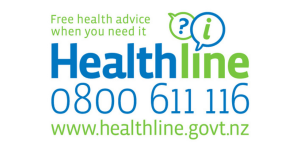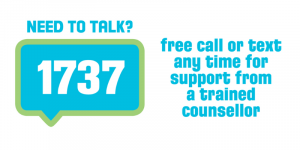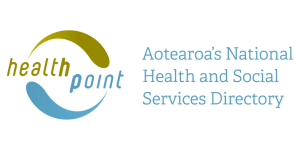Wishing everyone a safe and happy Christmas and New Year – Meri Kirihimete from the Healthify team.
Fexofenadine
Sounds like 'fex-oh-fen-ah-deen'
Key points about fexofenadine
- Fexofenadine is an antihistamine used to treat and prevent allergies such as hay fever.
- Fexofenadine is also known as Telfast®, Fexaclear® and other brand names.
- Find out how to take it safely and possible side effects.

Fexofenadine is used to treat and prevent allergies such as hay fever (sneezing, runny or itchy nose, itchy eyes) or skin allergies such as hives (itching, redness, lumps). It works by blocking a chemical in your body called histamine, which is released during an allergic reaction.
Fexofenadine belongs to a group of medicines known as antihistamines. Fexofenadine is a non-sedating antihistamine, which means that it's less likely to cause drowsiness or make you feel sleepy.
Fexofenadine is also known as Telfast®, Fexaclear® and other names. There are many brands available to buy over the counter at your supermarket (packs of up to 5 tablets), pharmacy or on prescription from your prescriber.
Read more about antihistamines.
In Aotearoa New Zealand, fexofenadine is available as tablets (30 mg, 60 mg, 120 mg, 180 mg) or as a liquid (30 mg in 5 mL).
The dose of fexofenadine for adults depends on what you're taking it for.
- Allergic rhinitis (hay fever): 120 mg once day OR 180 mg once a day OR 60 mg 2 times a day.
- Urticaria (hives): 180 mg once a day.
You can just take fexofenadine on the days you need it. It can be restarted if the symptoms come back.
Some people take fexofenadine for a few weeks when their allergies are a problem, such as in spring. Others take it long-term to help control allergy symptoms.
- Are you pregnant, trying for a baby or breastfeeding?
- Do you have epilepsy?
- Are you taking or using any other medicines? This includes any medicines you can buy without a prescription, as well as herbal and complementary medicines.
If so, it’s important that you tell your healthcare provider before you start fexofenadine. Sometimes a medicine isn’t suitable for a person with certain conditions, or it can only be used with extra care.
- Timing: Take fexofenadine once a day at the same time each day.
- Food: You can take fexofenadine with or without food.
- Tablets: Swallow the tablet whole, with a glass of water.
- Liquid fexofenadine: Shake the bottle well and use an oral syringe or measuring spoon to measure each dose.
- Missed dose: If you forget to take your dose, take it as soon as you remember. But if it's nearly time for your next dose, just take the next dose at the usual time. Don't take double the dose. If you're not sure what to do, ask your healthcare provider.
- It's important to take it as prescribed: See tips to help you remember to take your medicines regularly.
Here are some things to know when you're taking fexofenadine. Other things may be important as well, so ask your healthcare provider what you should know about.
- Other medicines: Fexofenadine interacts with some medicines, herbal supplements and rongoā Māori, so check with your healthcare provider before starting fexofenadine and before starting any new products.
- Indigestion medicines: If you also take indigestion remedies, take them at least 2 hours before or after you take your fexofenadine.
- Alcohol: Limit alcohol while you’re taking fexofenadine. It may increase your chance of side effects such as sleepiness.
- Grapefruit, apples oranges and their juices: Avoid grapefruit, apples, oranges and their juices while taking fexofenadine. It can make fexofenadine less effective. Read more about grapefruit and medicines.
Like all medicines, fexofenadine can cause side effects, although not everyone gets them. Often side effects improve as your body adjusts to the new medicine.
| Side effects | What should I do? |
|---|---|
|
|
|
|
|
|
|
|
|
|
Read more about medicines and side effects and reporting a reaction you think might be a side effect.
The following links provide further information on fexofenadine.
Fexofenadine(external link) NZ Formulary Patient Information
Telfast tablets(external link) Medsafe Consumer Medicine Information, NZ
Telfast liquid(external link) Medsafe, NZ
Brochures
Medicines and side effects(external link) Healthify He Puna Waiora, NZ, 2024
5 questions to ask about your medications(external link) Health Quality and Safety Commission, NZ, 2019 English(external link), te reo Māori(external link)
References
- Fexofenadine hydrochloride(external link) NZ Formulary
- Fexofenadine hydrochloride(external link) NZ Formulary for children
- Antihistamines(external link) NZ Formulary
- Telfast(external link) Medsafe data sheet, NZ
- Preston C, Jones S, Sandhu H. How fruit juice interacts with common medicines(external link). The Pharmaceutical Journal, PJ, 11 October 2014, Vol 293, No 7831;293(7831).
- Decision to fully fund fexofenadine hydrochloride 120 mg and 180 mg tablets for people with allergies(external link) Pharmac, NZ, 2024
Brochures
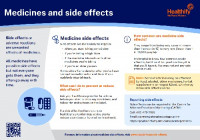
Medicines and side effects
Healthify He Puna Waiora, NZ, 2024
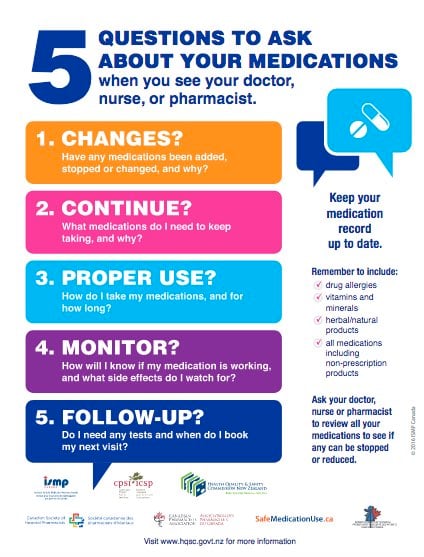
Health Quality and Safety Commission, NZ, 2019 English, te reo Māori
Credits: Healthify editorial team. Healthify is brought to you by Health Navigator Charitable Trust.
Reviewed by: Stephanie Yee, Pharmacist, Auckland
Last reviewed:


